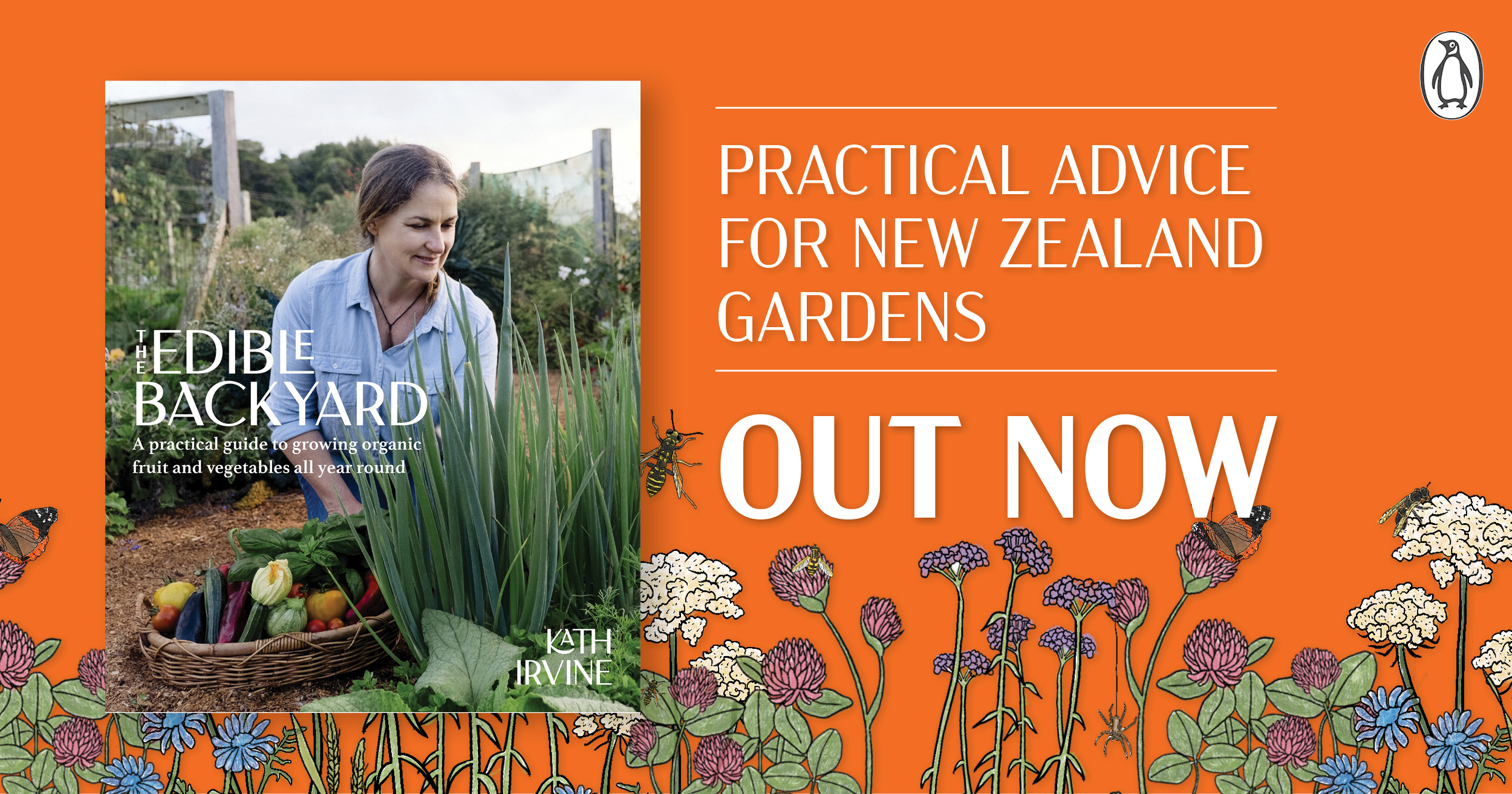How to Grow Potatoes

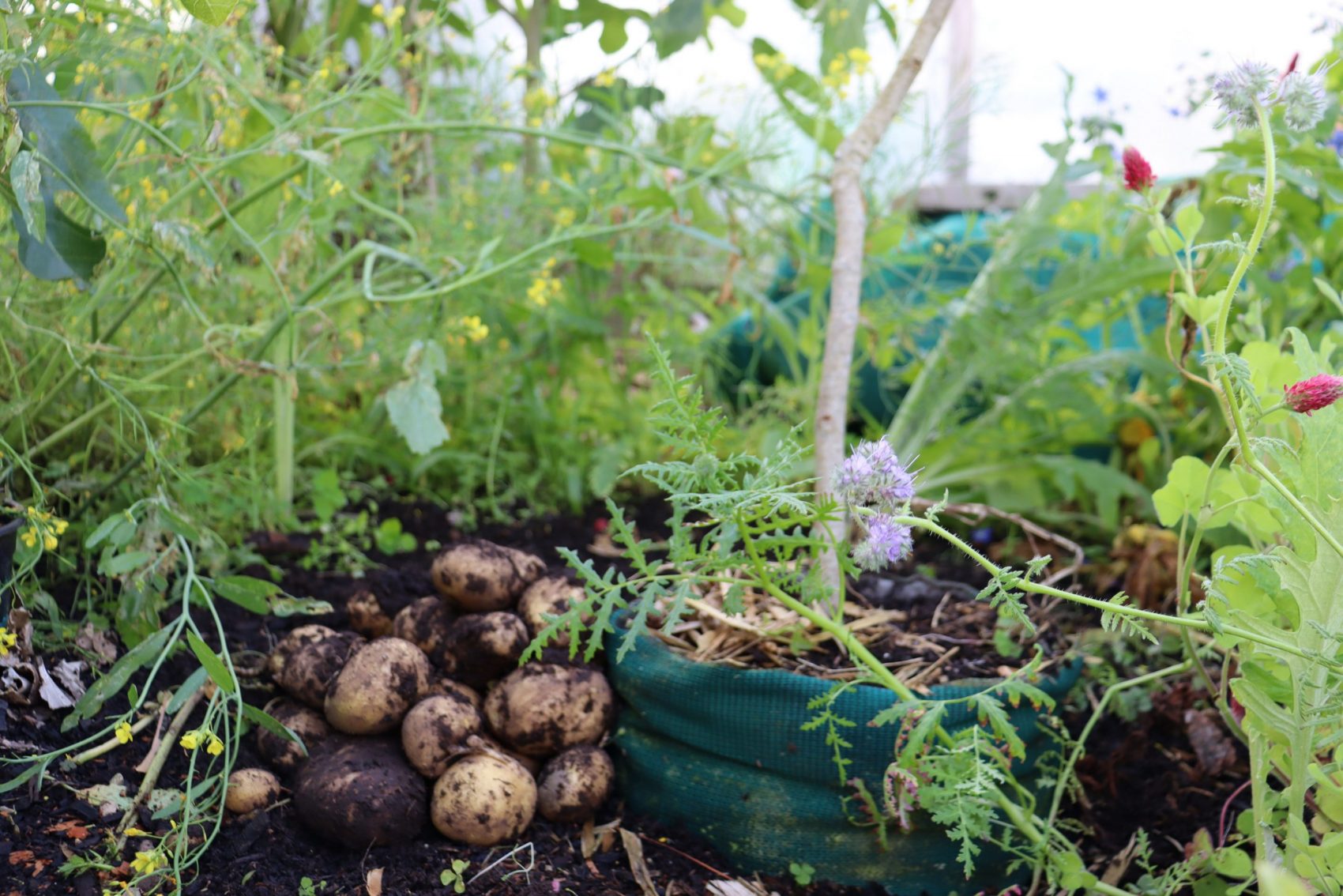
Spuds are so easy that you can accidently leave a tuber in ground and grow a whole new crop. Rogue potato seedlings turn up all over the place - I leave these where they are by the way. Every extra kilo of delicious homegrown potatoes is most welcome in my house. This ease, makes them a high value crop. Crops that pump out produce with little inputs and effort, are the ones that make the most sense to grow.
The two key things to focus on with spuds is warm (neither too hot nor too cold), loose organic matter to grow in, and a little nourishment.
There are only 2 tricky bits. The first is storage, which I do my best to mitigate by staggering planting throughout the year, and the second is finding enough organic matter to pile up on top of them. I often run out - but potatoes you'll soon learn are very flexible - instead, just dig a trench and grow them below, rather than above.
Timing
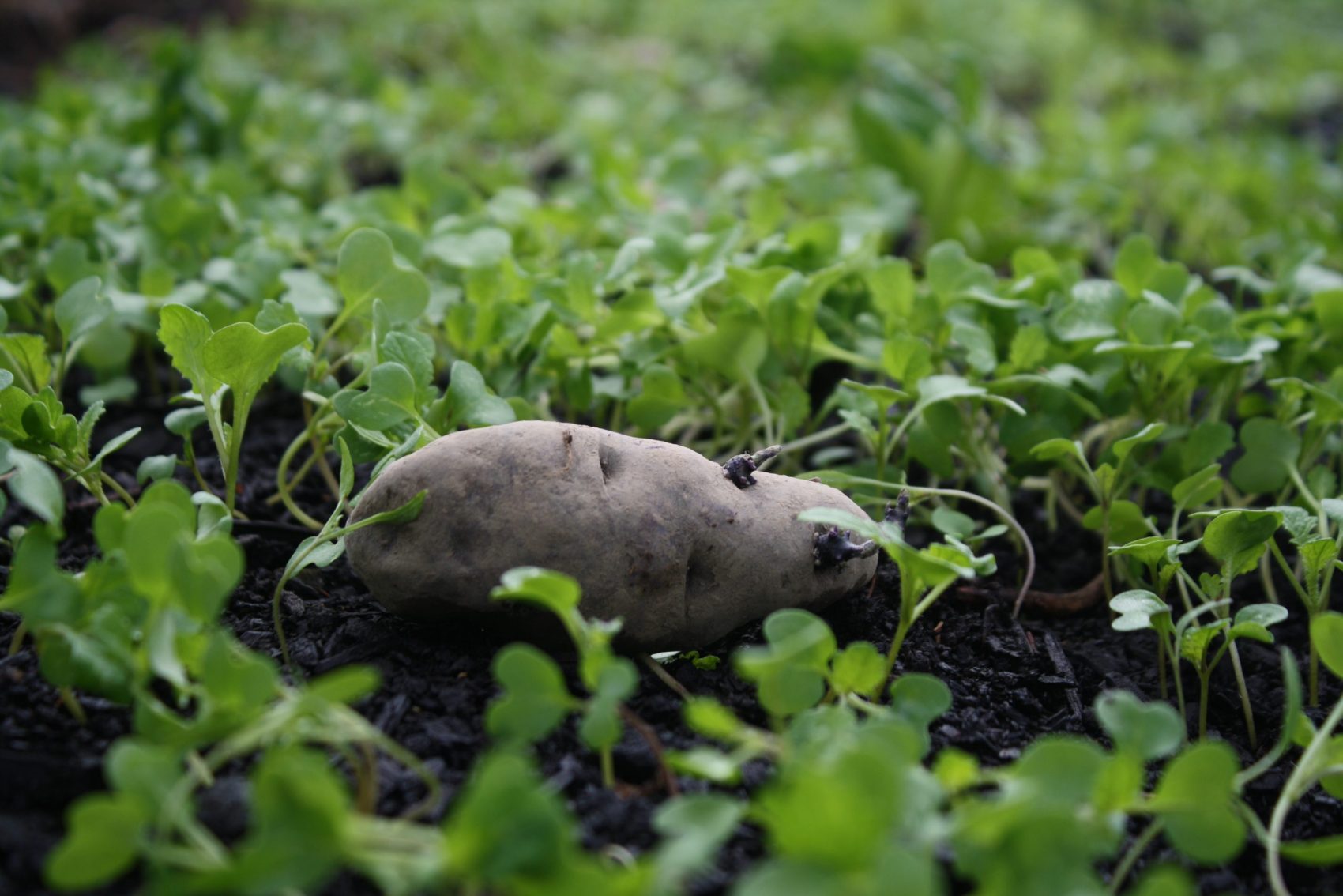
In warmer areas potatoes can go in from late August through until November. I plant my first lot in September - new potatoes for christmas! If its cold and wet - which it often is here - I'll grow them in buckets rather than in the ground.
Then I plant a few beds outside October and November and sometimes December if summer is slow in coming. Potatoes are not big fans of heat, you see - preferring middle of the road temperatures.
Another lot goes in in Autumn. Such a good value crop this one - it saves me having to grow loads over summer and store them. The greenhouse is an option for over winter.
Potato mechanics
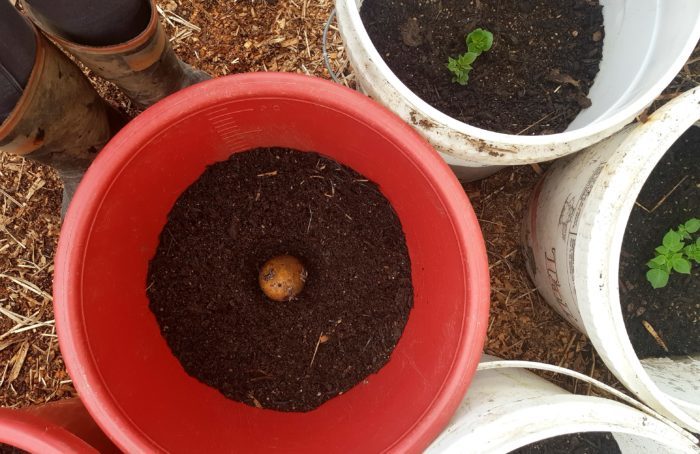
Spuds grow up. From a seed potato springs a bunch of stems that grow upwards, finding the light. Above ground, these stems grow leaves. Below ground they grow potatoes. Getting more potatoes is simple: grow more stems underground. This is where hilling up potatoes comes in. The more compost/ soil/ organic matter you pile on top, the more below ground stems you get. This generous covering also prevents potatoes being exposed to light which turns them green, alerting you to toxicity.
Here are 4 ways to grow spuds. I use them all!
Spuds in a bucket
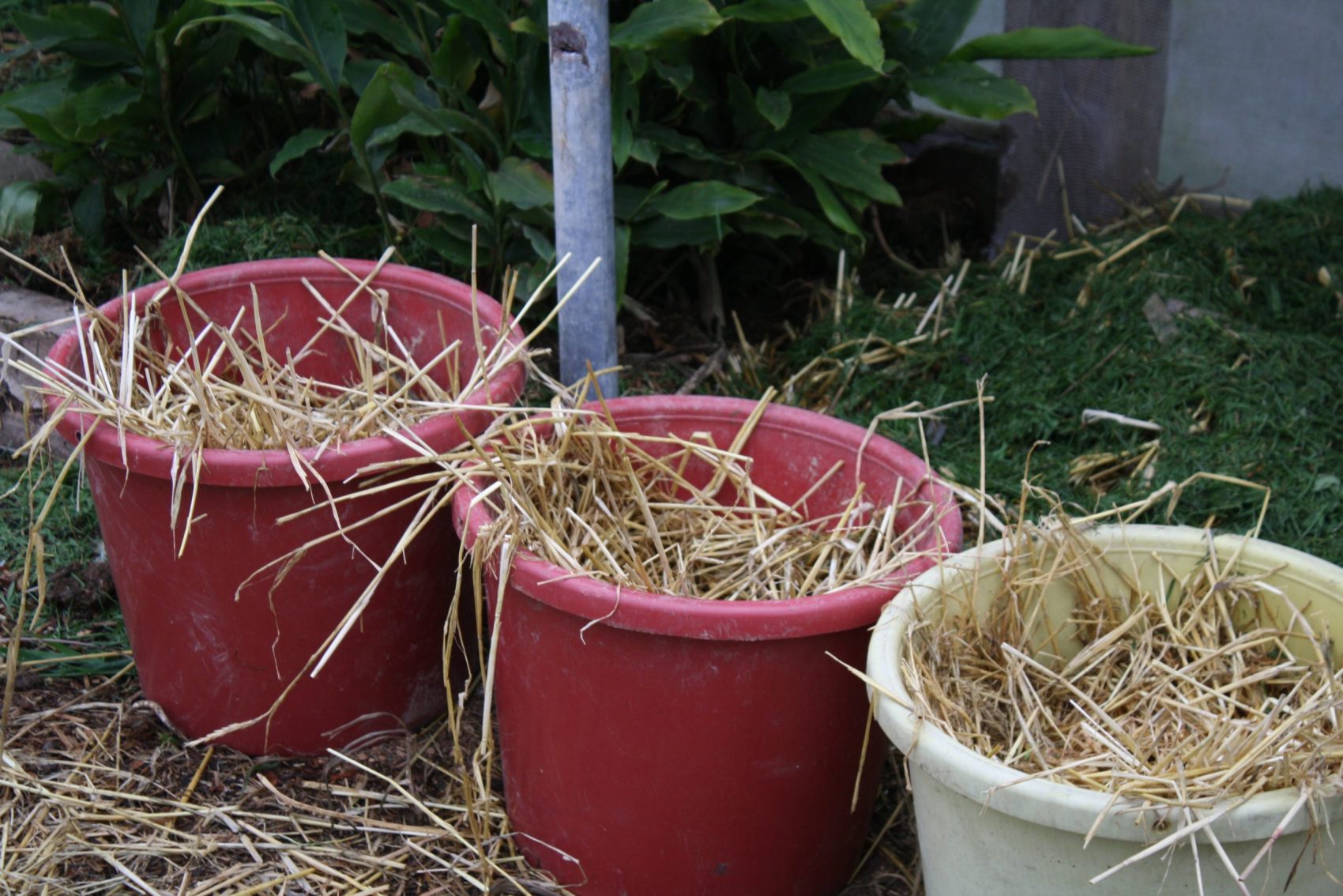
Spuds in buckets don't yield as highly as spuds in ground, but its a wonderful head start for those of us with cold, wet September soil, and is a perfect solution for small gardens.
Use buckets or boxes or sacks - anything with holes in the bottom for drainage - a great use for old cracked, broken buckets. Line the bottom with about 10cm of compost, good soil, really well rotten manure or a mixture. On top of this lay a few bits of seaweed or comfrey or some vermicastings and nestle your seed potato in - one seed per 10 litres. Fill the bucket up to the top with a mix of whatever organic matter you have to hand - compost, seaweed, hay, grass clippings, straw and you're off!
- In hot weather keep the bucket amongst shrubs to keep the soil cool but leave the tops in the light.
- In cool weather leave the buckets in the sun to stay warm.
Spuds in a pile of OM (organic matter)
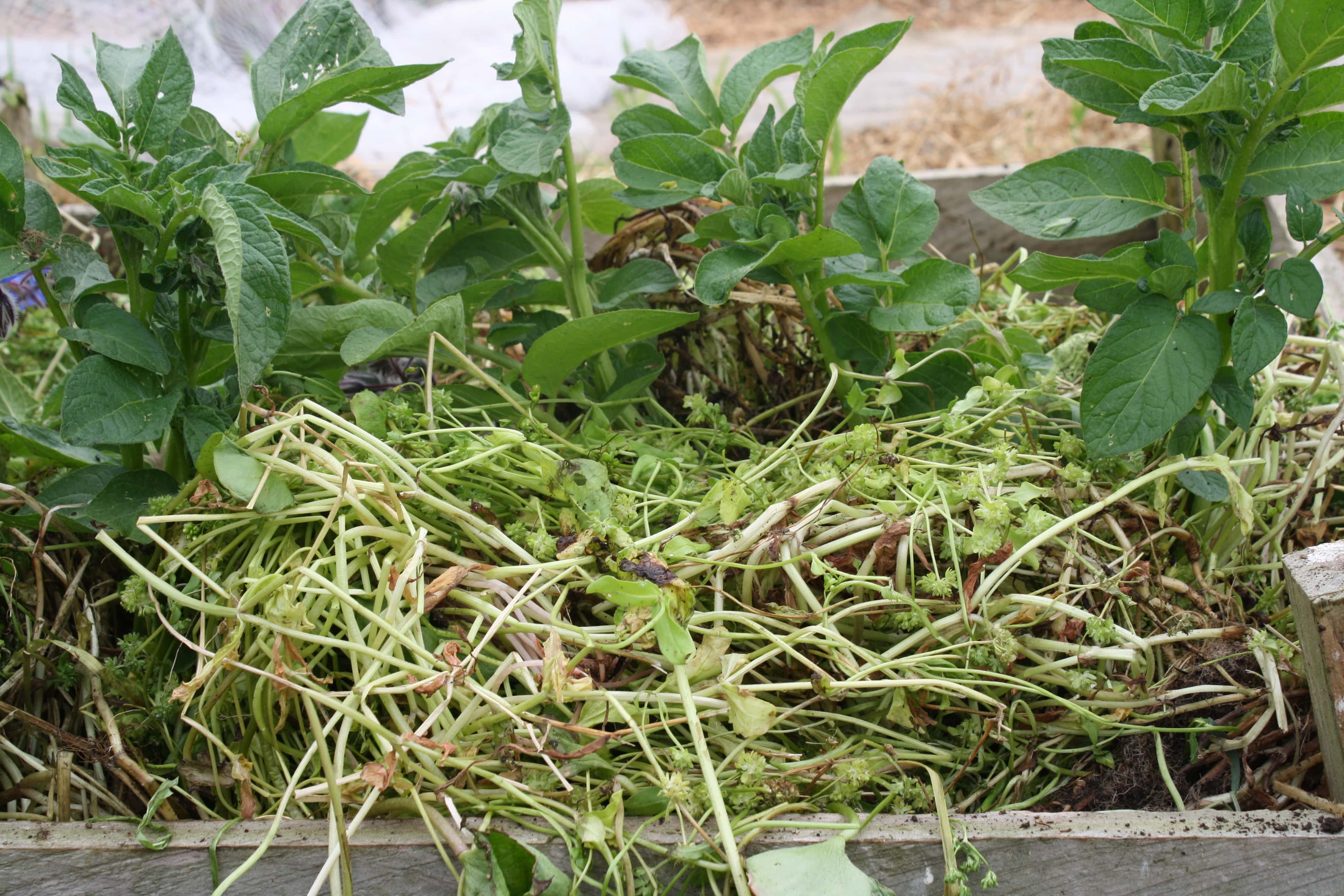
OM or mature compost grows the best spuds and this is by far and away my favourite way to grow them. Its very simple and quick to make and at the other end, unmake. Potatoes come out easily, no digging required and they're clean - such a joy! The effort is in the gathering of the OM.
A no dig potato pile is an excellent way to break in new ground and kick start a vegie growing area. There's no need to clear the grass, just lay cardboard and drop a shovel full of compost every 40cm. Nestle a seed potato into each pile then cover with a mixture of organic matter up to a minimum of 30cm high. I love partially rotten, organic hay for this, but its not always easy to come by. Seaweed, weeds, grass clippings, leaves, compost - make a big old mixture.
Spuds in a trench

I rarely have enough organic matter to grow all the potatoes I wish to in no dig piles, so needs must - in this case I dig. Its important the soil isn't wet or cold. Be sure its above 10° C, at least.
Make a 20cm trench. Pile the dirt from the trench to one side and be sure not to step on it and squash it down - you'll need it soon enough. Spread a generous layer of compost or well rotten manure or seaweed at the base of the trench and lay your seed at 40cm spacings. Refill the trench with the dirt you removed.
Spuds in the wild
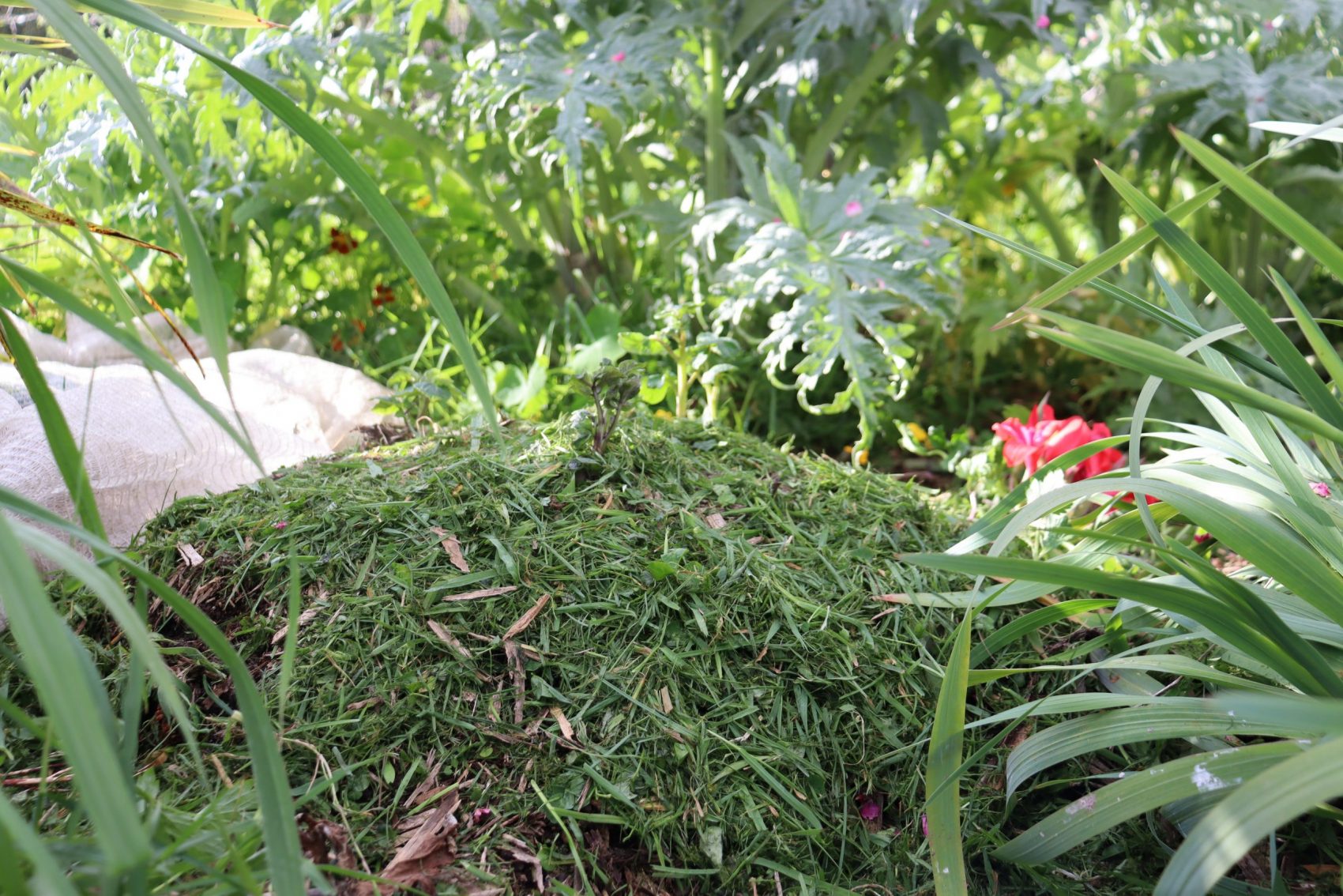
Another string to my bow are the potatoes that are happily growing semi wild beneath my deciduous fruit trees. They began in the way of all my gardens – with cardboard laid on top of the ground. A generous shovelful of compost or good garden soil + seaweed or comfrey beneath the seed potato and on top, a mash up of whatever organic matter I could scrounge piled about 1m high. When the tops have flowered and are looking lush and full, take an easy rummage beneath and feel out a few good sized tubers for dinner, then plop on a bit of mulch as a thankyou and impetus to keep up the good work. A handy dandy supply for between harvests.
Care
I don't feed my potatoes, nor do I water them - they stay beautifully moist on account of our generous spring rains and the pile of moisture retentive organic matter they are growing in. If you are somewhere dry, potatoes will benefit from water, particularly around flowering time. Finding a way to bypass the foliage and get to the soil.
I do cover them though, with insect mesh on plantings from October onwards to prevent the psyllids getting to the crop.
